Worts and all
This week: Worts and all; Hot days; Butterfly bush ; The Pistachia Moth;

It has been hot this week, although nothing like the 40ºC still being experienced across western Europe.
This morning (Saturday) the temperature outside was 28.5ºC, 29.8ºC inside and humidity was 60%. It is over 37ºC as I write this.

I came in, my clothing soaked in perspiration after having been out in the orchard for little more than an hour. To be fair the air felt extremely sticky even when I was watering the olives just after 06:00.
I like heat, dry heat, but when you have high temperatures and high humidity, it makes you feel extremely uncomfortable.
This is because perspiration does not evaporate from your skin. Evaporation is the body’s cooling mechanism.
Most days this week have been like this, so I have spent little time outside, and a lot of my time doing jobs on the computer.
Worts and all
There are an abundance of different wild flowers which originate in the Mediterranean, which have been taken around the world by travellers and explorers.
The “weeds” are the ones which will thrive and out-grow everything else and become invasive, where ever they are taken.
The “flowers” are the plants which we have to nurture and encourage to grow, sometimes thriving, sometimes ‘only just surviving’, but which are well behaved in their reproductive habits.
This week I cut down all my Cerinthe major ‘Purpurascens’ also known as the Honeywort.

The Etymology of the word “Wort” is from the Middle English word, wurt, wyrte (“plant”).
Previously from the Old English wyrt (“herb, vegetable, plant, crop, root”), which in turn came from the Germanic *wurtiz, and even earlier from Proto-Indo-European wréh₂ds. Which meant related to an orchard.
Wort is used in names of plants and herbs, especially those used formerly as food or medicinally, for example butterwort, lungwort, woundwort.
There is a yellow flowered variety, also called Honeywort, just to confuse things. I would like to find some seeds of the yellow variety.
With the flowers cut, I spread them out on an envelope to separate the seeds from the husks.

Although each flower is around 10 cm long, they only have a single or just two seeds.
It takes time rubbing the flowers between your fingers to separate the large black seeds from the dry flowers. In the end I was able to harvest just 51 seeds.

Often seeds are tiny, in some cases almost microscopic, but these are large and around 4 mm in length.
That does make them easy to feel between your fingers, but it is a long task to individually separate and save every seed.
I will be planting them alongside the new border in the orchard in the hope that in future years, they will self seed and spread.
Hot days
I have no shortage of projects both inside and outside, so when it is too hot (or too cold) to work outside, I can always spend time on the computer.
Early in the week I was formatting some large external Hard Disc Drives, to use a filer backups.
I don’t have any Network Attached Storage (NAS), which is basically a server, attached to the network, which is the depository for all your files. Instead I have several large, two terabyte, external hard drives.
I bought a couple of new ones recently, but they needed to be formatted ready for use as file storage.
It used to be that photographs were around 0.25 of a megabyte each. My cameras today save files which are each over 5 megabytes. A terabyte is one million megabytes, so it will store a lot of images.
Because I take around 1,500 photographs a year, there is storage space for around 150 years of photographs. Except, videos create much larger files, so let’s say 100 years.
The last time I did a digital tally of my photographs, I had more than 35,000, which will take up just one fifth of the space on a 1 TB disk.
It is alright saving all these images, but you need an extraordinary indexing system, to be able to find anything you want!
As well as digital photographs, I have a lot of scanned images, and scanned photographs.
One historic photograph, scanned at high resolution can take up 150 megabytes of space, and it is important to scan them at high resolution, to draw out as much detail as possible.
I am often asked to try and identify which force an officer is from, using a photograph. Sometimes it is easy, usually identification is hard.
This photograph which was taken in Pontefract, is an example.

I know which forces he is not from – none of the old Yorkshire forces from the 1920’s – and I suspect he is probably from the Aire and Calder Navigation Police. However I have yet to trace their coat of arms to confirm it.
Several days this week when the temperature has been 35ºC or higher outside, I could be found working on digitising and colouring a black and white Grant of Arms which I have.
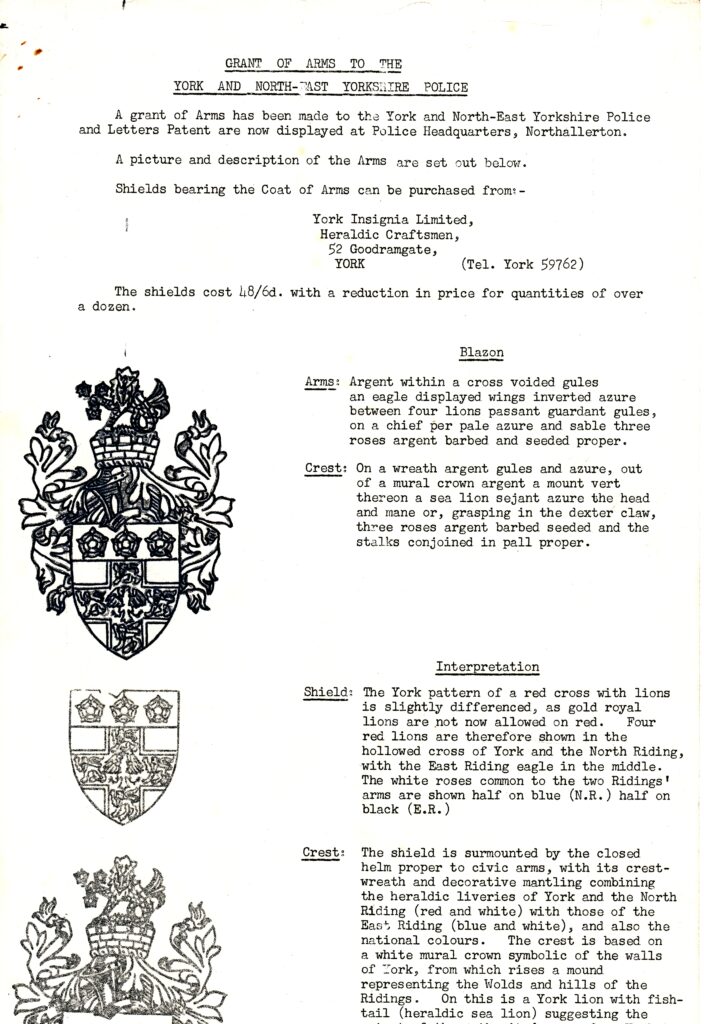
The document dates from 1970, when there was precious little colour photography and no colour copying, but it does have the heraldic colours, in the language of the college of heralds, gules, azure, vert, sable and or.

Fortunately there are a number of websites which convert these colours to English and give their computer colour hexadecimal codes.
I also have a single shield with the Escutcheon in colour, painted by a heraldic studio. So although a little laborious, I have been able to recreate the coat or arms in colour.
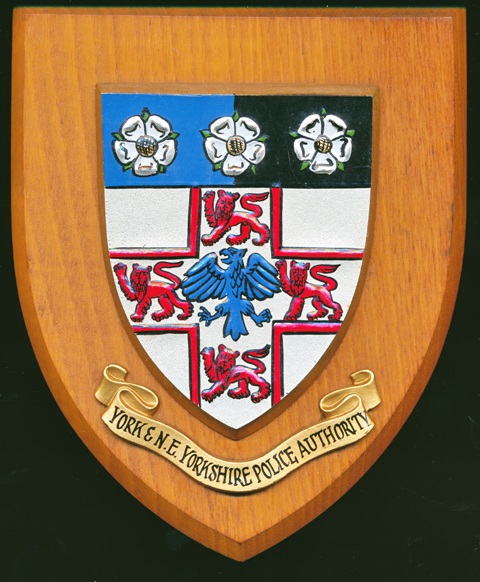
Sadly the whereabouts of the original Letters Patent are not known and no colour copy is known to exist. The College of Heralds records have not been digitised and nothing exists online.
This is for a project I am working on, a guide for lay-people trying to identify relatives for their family history, from old photographs which they have which may include a crest or badge.

After more work on Saturday, the full colour coat of arms is almost finished. I have more work to do on the Mantle and the red lions though.

Even on hot days, computer work can be fun.
Butterfly bush
I have three different varieties of Buddleja, known as the “Butterfly bush” because of how it attracts butterflies and other insects.
Two of my varieties are a white and a purple Buddleja davidii.
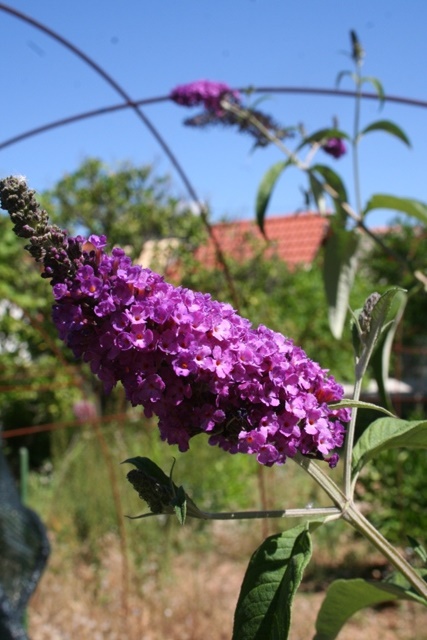
What I have found since I planted them is that they do not attract the number of butterflies that the same varieties do in the UK. In particular, the purple flowered Davidii has hardly has any butterflies coming to feed at all. It does attract bees though.
The white flowered variety seems to attract Red Admirals, but neither attract the large Swallowtail butterflies I have. They prefer my Lantana Camara, as do Humming Bird Hawk Moths.

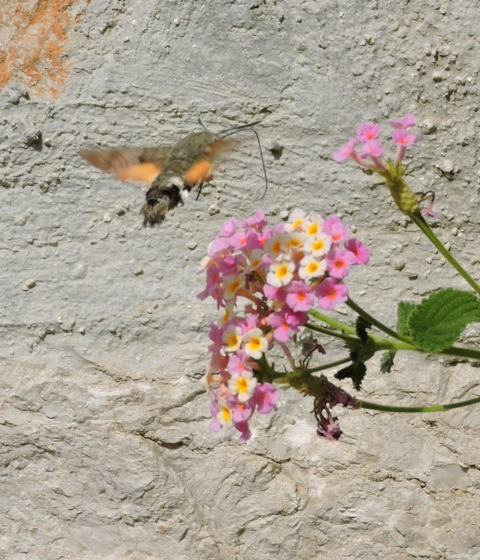
The white Buddleja seems to like my orchard and is now over 3 meters tall. The purple flowered variety survives, just, but struggles with the heat and dry conditions.
They are certainly not the invasive species that they are in more temperate climates.
I sought out a tropical Buddleja called Buddleja madagascariensis. Unsurprisingly, with a name like that, it originates in Madagascar.
This is one of the shrubs I planted in the orchard border in the early spring. It is thriving and is both covered in different butterflies and other insects searching for nectar.

The flowers do not last as long as the purple and white varieties, lasting little more than a day.
Even though the shrub is in its first year out of a pot and is little more than a meter tall, I can usually count twenty or more butterflies on it at any one time.

As well as the Southern White Admirals, Limenitis reducta, there are Meadow Browns, Maniola lycaon, and Red Admirals.
The Pistachia Moth
I’ve been out at dusk many times since early June, looking for glow worms and fireflies. Sadly, I haven’t seen a single example, whether in the woodland around my home, or in the orchards and olive groves or on the uncultivated land nearby.
During my perambulations I’ve seen lots of wild life though. There seems to be several healthy Bat colonies nearby.
This last week in one location there were four Bats flying around and hunting for insects. I don’t have an ultrasonic bat detector to identify the species, perhaps a request for Father Christmas!
It is difficult too, because I am usually accompanied by two or more of the felines.
Dusk is their time of day and with their enhanced low light eyesight and hearing, I use them to see what I can’t. They alert and go into a hunting mode, tail straight out, ears and head pointing at the prey.
With a torch I can often see what is is they have found. A big pink toad, Bufo viridis perhaps, or one of the many species of Bush Cricket.
I also walk around my orchards, just in case I have some glow worms. I haven’t found any.
This week I disturbed a large moth, one I have not seen before.
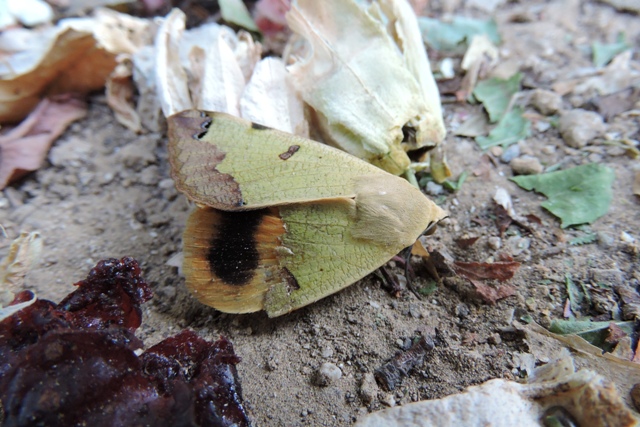
On the ground, feeding on a fallen plum, the moth blended effortlessly with the surrounding dull green of fallen leaves and the beige of dry Passiflora flowers.
It was only when it flew and the orange and black under wings were visible that I noticed it.
This is the Green Drab or Pistacia Moth, named because much of its life revolves around the various species of Pistacia trees.
I wrote in blog 22/23 about the strange Galls on Pistacia Terebinth, near my home.
I also have Pistcia atlantica, the Pistachio nut tree in my orchard and after discovering that the caterpillars head straight for the newest, most juicy shoots I had a look. There weren’t any there, but it is something I will watch out for.
Every time I see something new, I wonder how much more there is to discover about the wildlife which surrounds my home. NCG
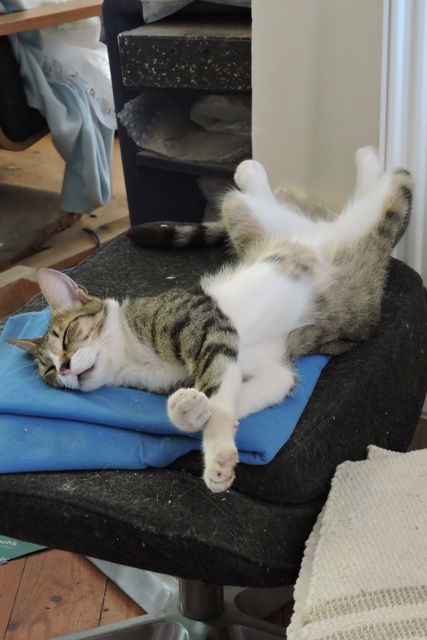
One Response
Marcy
Norman, Loved the flowers, butterflies, and plants. I’m going to look for both HoneyWort (Wort) after I move. I’m moving to California to Santa Maria. 12 miles from the ocean and highest heat recorded is 82F. Only 105k people, and lots of sun (no snow recorded since 1957). I’m also going to look for the flowers mentioned above to attract bees and butterflies. I have a few here, but not many.
The Coat of Arms were incredible. They are amazing. I have one for my maiden name, Woods. My father’s people were English and moved to Ireland, and my mother’s people are all German.
Hoping the weather starts to cool down. We are in the 90’s here. The only good thing is it tends to cool down early, and we’ve had unusual rain in the late afternoons.
The BA.2 subvariant of SARS-CoV-2 is alive and well here. It seems to be worse for older people, and the shots don’t seem to impact it. So, I’m back to wearing a mask when shopping or being with other people. So, please stay safe, and have a great rest of July. Marcy